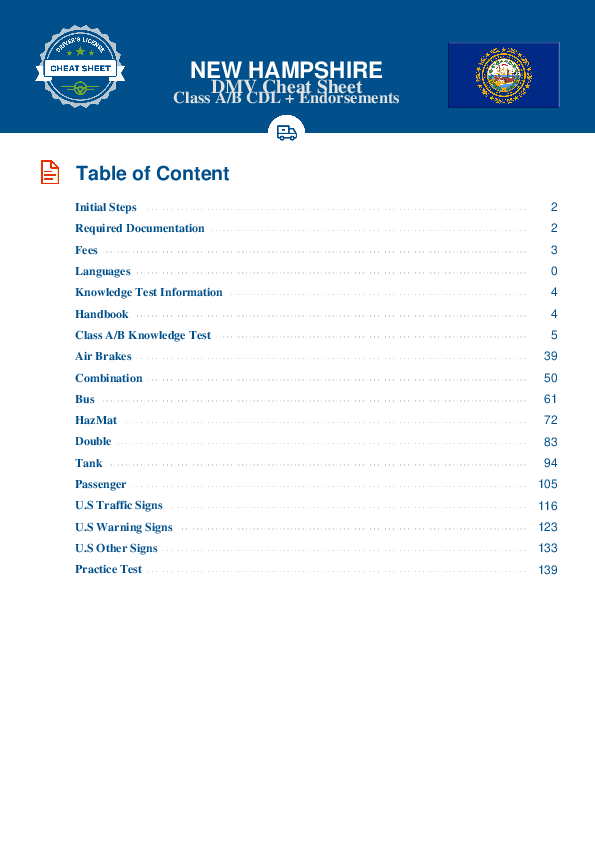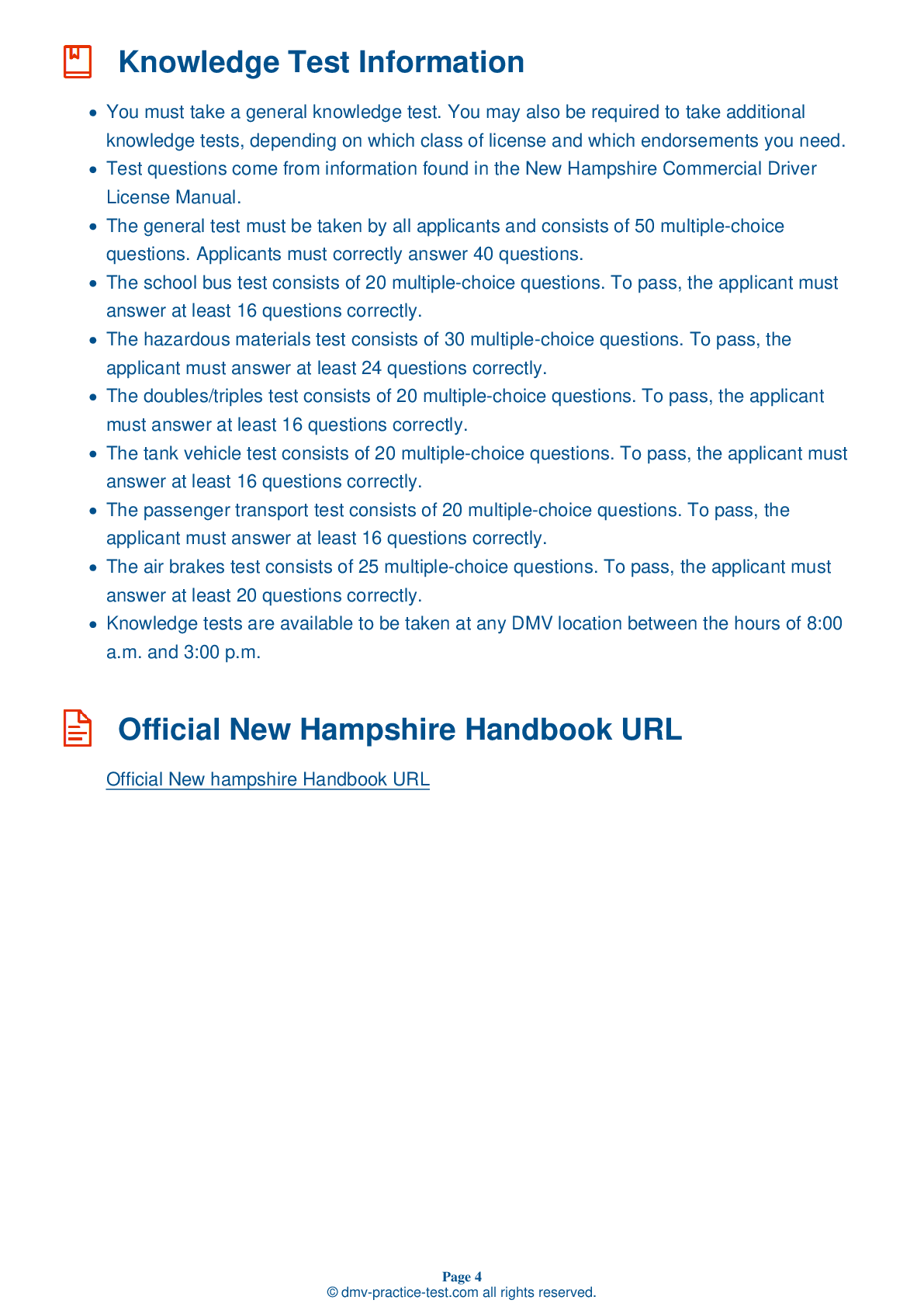Knowledge Test Class A #2
Class A Driving Test | New Hampshire 2025 #2
Train for FREE online with our New Hampshire class A license test. The official exam test consists of several obligatory parts, with all of them checking your knowledge of different blocks of road rules. If you need to obtain a NH CDL class A permit in 2025, practice as much as possible. Free sample tests published on our website will help you check and improve your knowledge and boost your grades. Please bear in mind that CDL class A requirements may vary from state to state.
50
40
20
1 . Belts in the engine compartment should be:
Easy to slide off.
When inspecting your vehicle's engine, check the belts for tightness and excessive wear. The amount of "give" that is safe for each belt in a given engine will vary, so learn what is appropriate for your vehicle.
2 . What should you do if the brake pedal does not build up pressure?
Pump the brakes.
If you lose pressure in a hydraulic brake system, one appropriate response is to shift down into a lower gear. This will help slow the vehicle.
3 . On any upgrade, gravity will:
Cause your vehicle to swerve to the left.
When driving uphill, you are fighting the force of gravity, which will slow down your vehicle.
4 . Which of the following is not a sign of a person being drowsy?
Yawning
Driving drowsy is dangerous and should always be avoided. Warning signs of drowsiness include frequent blinking, your eyes closing or going out of focus by themselves, frequent yawning, and drifting between lanes.
5 . Alcohol usually:
Alcohol impairs a number of basic functions necessary for safe driving, including muscle coordination, reaction time, depth perception, and night vision. Operating a motor vehicle while under the influence of alcohol is both illegal and dangerous.
6 . What are placards?
Journals for mileage
Placards are diamond-shaped warning signs that are placed on the outside of vehicles carrying hazardous materials. Placards are used to identify the specific hazard classes of the cargo being carried.
7 . Which of the following is a situation in which you may not need to slow down and be extra careful?
Where there is increased traffic



